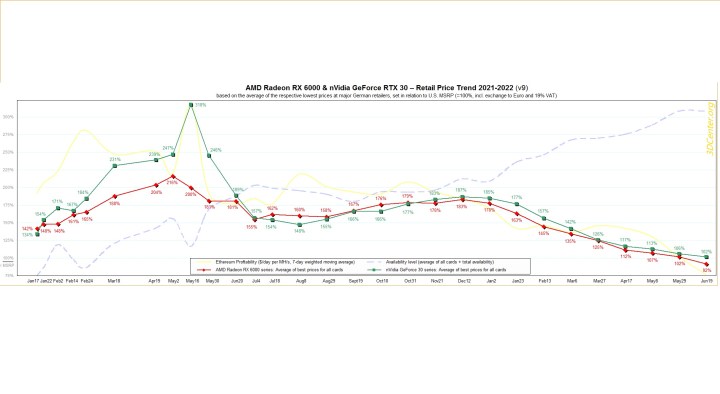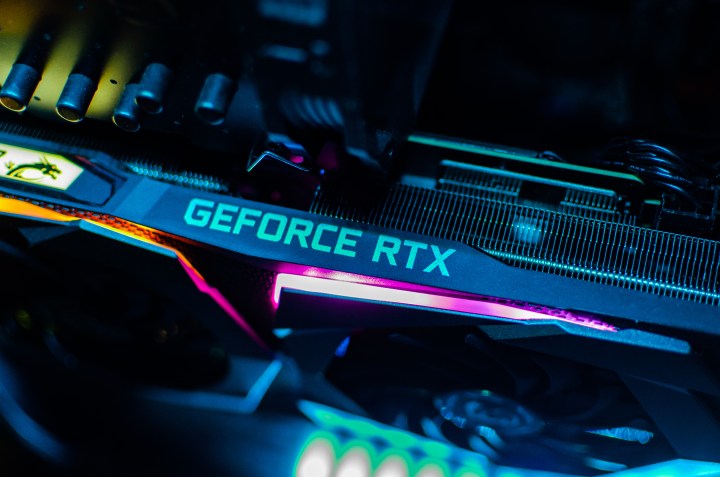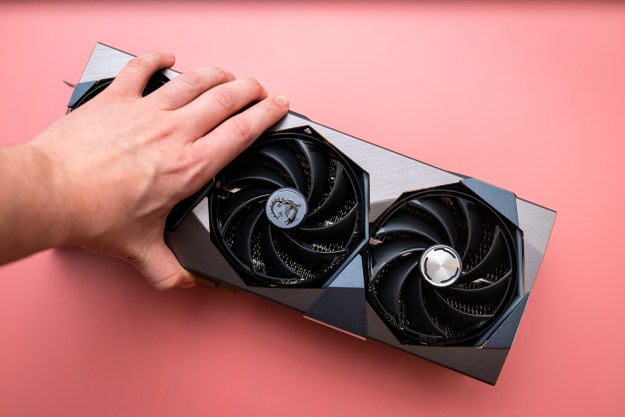The streak of good news for gamers in need of a new gaming PC continues as the prices of graphics cards keep on falling. The latest report about GPU pricing shows large drops for both AMD and Nvidia graphics cards.
This is the first time that some of the best graphics cards from the latest generations can be found not just at MSRP, but under it, marking a shift in the market that we haven’t seen in a really long time.

Most of us have gotten so used to the GPU shortage that news like this certainly feels like a dream come true — the graphics card prices continue falling. According to 3DCenter, which publishes regular reports on GPU pricing in Germany, both AMD and Nvidia GPUs are consistently dropping in price. This month, the report marks a first since the release of the latest AMD Radeon RX and Nvidia GeForce GPUs because the cards are near or even below their intended MSRP.
The latest analysis indicates that the average price of an AMD graphics card noted a drop of 8% below MSRP. Nvidia is still not quite there yet, but the prices have also dropped considerably. As it stands now, the average Nvidia GPU is around 2% more expensive than MSRP. However, there is a lot of variation across the board, and some of the more affordable GPUs are still seeing the worst price inflation while the high-end models are near MSRP.
Nvidia’s budget RTX 3060 and RTX 3060 Ti are now 11% and 17% more expensive than their intended prices. Interestingly enough, this doesn’t seem to translate to similar inflation for AMD, as the comparable GPUs from Team Red (RX 6600 and RX 6600 XT) are well below MSRP — 20% and 7%, respectively.
Looking at high-end graphics cards shows a slightly different story. Nvidia’s top GPU, the RTX 3090 Ti, is now 16% under MSRP, followed by the RTX 3090 at 8% below and RTX 3080 Ti at 13%. For AMD, the two top cards, the RX 6950 XT and the RX 6900 XT, are 4% and 16% below MSRP, respectively. However, the RX 6800 XT stays strong at 6% over MSRP. It’s worth noting that these cards were all cheaper to begin with, seeing as the RX 6950 XT has an MSRP of $1,099 compared to the $1,499 of the Nvidia GeForce RTX 3090 and the $1,999 of the RTX 3090 Ti.
It’s not just graphics card prices that are improving — the same can be said about DDR5 and DDR4 DRAM. According to TrendForce, a Taiwanese research firm, the prices of DRAM should drop by up to 8% due to inflation and the Russian invasion of Ukraine. These factors contribute to a lowered demand, and as a result, a decline in pricing.
While 3DCenter only reports on the European market, the downward trend is indicative of a price drop that’s seen globally. Prices may vary between markets, and exchange rates also play a part, but in general, things are certainly improving — and what a massive improvement it has been.

The pricing for some of Nvidia’s best GPUs peaked at around 300% of MSRP in May of 2021. AMD graphics cards always kept the prices a little more conservative, but even then, the prices reached as high as 216% around April and May in 2021. After dropping from the very top, the pricing evened out slightly, with both manufacturers hovering around 150-180% of the MSRP for months on end. It’s only in the last few months that the prices started to normalize.
What contributed to such a large drop in pricing? After all, going from over 300% to MSRP is certainly a massive difference. There are a few factors that play into it. For one, the cryptocurrency market is currently in shambles, and that makes GPUs much less desirable for crypto mining. We’re also finally starting to see the results of various supply chain improvements both Nvidia and AMD have made over the past couple of years to combat the increased demand for graphics cards. Not too long ago, finding a GPU in stock used to be next to impossible, but now, you can reasonably find all kinds of GPUs for sale. A larger supply combined with a lower demand both add up to a considerable price drop.
Both AMD and Nvidia are soon set to release the next generations of graphics cards. With AMD’s RDNA 3 and Nvidia’s RTX 4000 set to release this year, we might continue to see the pricing of RDNA 2 and RTX 3000 drop.
Editors' Recommendations
- Nvidia RTX 50-series graphics cards: news, release date, price, and more
- The sad reality of AMD’s next-gen GPUs comes into view
- You shouldn’t buy these Nvidia GPUs right now
- How 8GB VRAM GPUs could be made viable again
- AMD needs to fix this one problem with its next-gen GPUs





